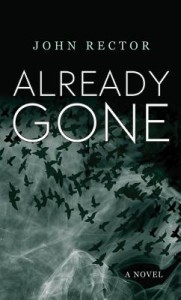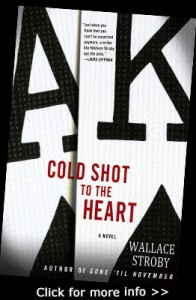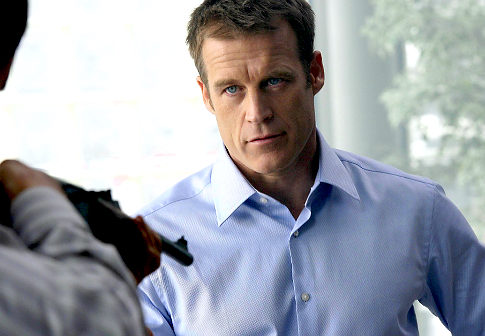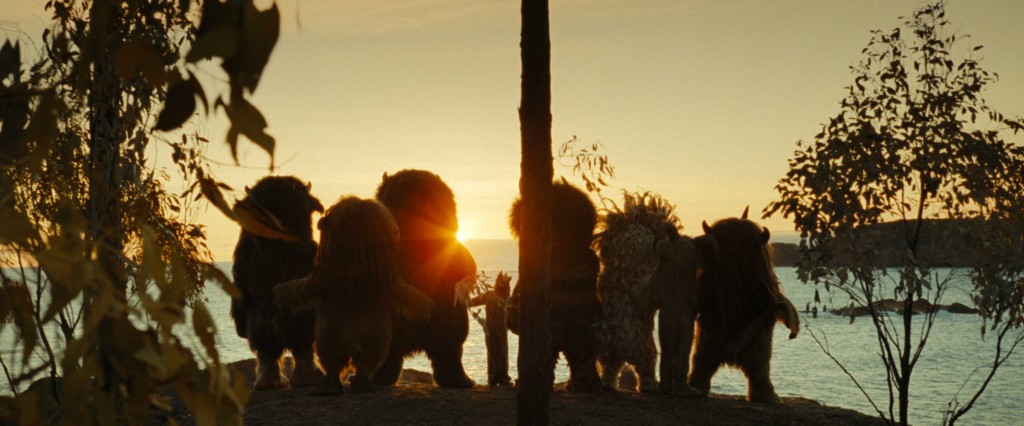 Raylan Givens, a US marshal whose no-nonsense way of upholding the law is viewed by his higher-ups as too reminiscent of the Old West, gets relocated from Miami, Florida, back to Harlan County, Kentucky, where the friends and enemies of his youth don’t exactly admire his current profession.
Raylan Givens, a US marshal whose no-nonsense way of upholding the law is viewed by his higher-ups as too reminiscent of the Old West, gets relocated from Miami, Florida, back to Harlan County, Kentucky, where the friends and enemies of his youth don’t exactly admire his current profession.
Although the dust jacket suggests a single plot involving our hero on the trail of redneck brothers Dickie and Coover Crowe, who branch out from pot dealing into organ trafficking, the story covers multiple cases. There’s Raylan tracking down a bank robber who skipped out on her arraignment, and reluctantly playing bodyguard for a coal-industry spokeswoman as she faces down angry Appalachian locals who suspect her of murdering one of their own. These stories play out as vignettes initially and connect as a whole by the end of the book, but the appeal lies in Elmore Leonard’s mastery in putting it all together.
I embraced this novel on two levels. First, as an appreciative reader of Leonard’s succinct, character-tailored prose, and secondly as a fan of Justified, the TV show based on the titular character. Die-hard Leonard fans might remember Raylan from two of the author’s previous novels (Pronto, Riding the Rap) as well as a novella (“Fire In The Hole” from his collection When the Women Come Out to Dance).
Actor Timothy Olyphant’s portrayal of this righteous badass with a past is so on point with the author’s intention, it’s hard not to visualize the actor while devouring the prose. Justified fans who pick up this book will undoubtedly recognize Boyd Crowder (played by Walton Goggins) and Art Mullen (Nick Searcy), but may have a few head-scratching moments when encountering plotlines the show took creative license with during the first two seasons. Hopefully, this won’t discourage watchers from becoming readers and enjoying the work of the man who created Raylan.
]]>
 While leaving a bar one night, newly married university teacher Jake Reese is jumped from behind, but instead of taking his wallet, his attackers cut off his ring finger along with his wedding band. He wakes up in the hospital with his wife and his best friend by his side, along with the cops. Jake tries to write it off as a simple assault and robbery, but the detective in charge isn’t buying it, and Jake’s straight-laced new bride suddenly needs time to think a few things over. It seems Jake has a criminal past which may have come back to haunt him. With one phone call, he knows he can make all his troubles disappear, as well as get the answers he needs, but it will surely cost him the life he has struggled so hard to rebuild.
While leaving a bar one night, newly married university teacher Jake Reese is jumped from behind, but instead of taking his wallet, his attackers cut off his ring finger along with his wedding band. He wakes up in the hospital with his wife and his best friend by his side, along with the cops. Jake tries to write it off as a simple assault and robbery, but the detective in charge isn’t buying it, and Jake’s straight-laced new bride suddenly needs time to think a few things over. It seems Jake has a criminal past which may have come back to haunt him. With one phone call, he knows he can make all his troubles disappear, as well as get the answers he needs, but it will surely cost him the life he has struggled so hard to rebuild.
Rector knows how to keep the action moving and the tension building to keep the reader guessing what will happen next, but he falters whenever it comes to giving Jake any kind of street savvy. This would be fine if Jake’s crimes from his youth don’t get mentioned so often. So limited are his basic survival instincts, and so few specifics are given about what Jake did that landed him in juvenile detention, one can almost conclude he simply got caught passing notes during class at a very strict private school. Luckily, this doesn’t completely derail the story because the author keeps throwing in twists. Jake’s bewilderment about his situation is shared by the reader, resulting in a quick read that will keep you guessing right up to the end.
]]>**************
Forget Cowboys & Aliens and Super 8. The best summer monster movie is the one you haven’t heard too much about: Attack the Block (in limited release). Writer/director Joe Cornish, who also co-wrote the upcoming The Adventures of Tintin, has combined a cast of appealing unknowns with a tight script to give audiences a witty, edge-of-your-seat movie experience.
Moses (John Boyega, in his first film) heads a gang of teenagers in a rundown South London neighborhood. The film opens with them mugging Sam (Jodie Whittaker), a female nursing student on her way home from yet another long day. Hoods are up, bandanas cover their faces and knives are wielded by this bike-riding group of young thugs. They don’t realize Sam wouldn’t be walking in their block if she wasn’t as poor as they are.
Before they can get too angry over getting so little money for their effort, something falls from the sky and crushes a parked car nearby. Instead of getting scared and running away, Moses shows why he’s the leader by deciding to strip the car. This is where his problems begin and the movie takes off.
Cornish proves a big budget isn’t needed to tell a great story. Sure, on the surface these guys are exactly the kind of punks everyone else would dismiss, but Cornish’s screenplay and direction move beyond their swagger and tough talk, turning them into the unlikely heroes we root for during the next 88 minutes.
Cornish doesn’t use special effects or melodrama to accomplish it either. In one heartbreaking scene, Sam enters Moses’s apartment, which he shares with his uncle. Moses is on his cell talking her from room to room while the alien monsters are hot on her trail. With very little dialogue, we watch Sam’s eyes as she changes her, and our, perception of Moses. Any more details would spoil this movie, but I will say the non-CGI, low-budget aliens instilled fear that lingered long after I got a good look at them.
I mentioned earlier that Cornish is one of the co-writers on the December’s Tintin movie, which Stephen Spielberg produced and directed. One would think this a tremendous learning opportunity for Cornish, but after viewing Attack the Block, I think Spielberg should be paying attention to the younger director’s work.
Photo: Liam Daniel/Screen Gems
]]>***************
 Ever try to quit something you know is bad for you, but it feels so instinctive it’d almost be wrong not to do it? That’s the dilemma loveable ex-criminal Montgomery “Monty” Haaviko faces on a daily basis.
Ever try to quit something you know is bad for you, but it feels so instinctive it’d almost be wrong not to do it? That’s the dilemma loveable ex-criminal Montgomery “Monty” Haaviko faces on a daily basis.
What keeps our hero on the path to upstanding citizenship is the love he’s found with tough-as-nails Claire and their adorable and feisty baby, Fred. There’s also a dog named Renfield and a mouse named Thor. This family, combined with Monty’s current occupation (no, I will not spoil it in case you haven’t read the previous book in this series, An Ordinary Decent Criminal), infuses the story with more than a few chuckles.
But the meat of both novels is how Monty uses his skills as a master criminal and all-around badass to blur the lines between right and wrong, without actually stealing or killing while keeping one step ahead of the cops.
In Your Friendly Neighborhood Criminal, Monty and Claire are struggling financially with his odd jobs and her budding real estate venture, but it’s all legal so there’s a stability to their newfound life on the straight and narrow. Until a tempting offer comes along. Monty has to decide whether to use his abilities for a good cause and a great payout, or walk away and continue wrestling with his cash flow issues.
Of course, his past comes back to haunt him anyway in the form of Smiley, a fellow lethal guy who shows up on Monty’s doorstep in the middle of the night, claiming he wants to try living the straight life as well. Add to the mix a crack den taking up residence down the street and Monty has his hands full keeping his family, the neighborhood and his current life safe from his past one.
Intrigued? You want more? Here’s Monty’s response to Marie, someone who approaches him with a $5000/week job offer because of his past, and inadvertently makes him feel like she’s blackmailing him.
When Claire and I were standing Marie spoke in a bantering tone: “Out of curiosity. Just what is your response to blackmail?”
I didn’t smile. “I hurt you. I hurt you badly enough so you remember it forever. I burn down your house. I take an electric drill to your kneecaps. I blow up your workplace. Memorable shit like that.”
And memorable he is.
Though this second installment in Van Rooy’s wickedly fun and edgy series can stand on its own, I recommend starting with the first novel because you don’t want to miss Monty’s extremely intense backstory.
Unfortunately, the author passed away suddenly in January of this year, and though his third Monty adventure is available in Canada, it’s not clear when it’ll hit the States. It’s really too bad because Van Rooy was one of the good ones and I, for one, will miss this very promising series of books.
]]>**********
 Cold Shot to the Heart‘s protagonist Crissa Stone is a thief and a damn good one. She has a go-between named Hector who helps find jobs worth her talent and abilities, ones that come with a hefty paycheck of which Hector gets a piece. She usually works with a crew and rarely with someone she doesn’t know because she can’t trust anyone in her profession. When a job doesn’t feel right, she turns it down, no matter how rich the payoff.
Cold Shot to the Heart‘s protagonist Crissa Stone is a thief and a damn good one. She has a go-between named Hector who helps find jobs worth her talent and abilities, ones that come with a hefty paycheck of which Hector gets a piece. She usually works with a crew and rarely with someone she doesn’t know because she can’t trust anyone in her profession. When a job doesn’t feel right, she turns it down, no matter how rich the payoff.
Wayne, the person who taught her everything she knows, is currently doing time in prison. Along comes a greedy Texan with a powerful sway over the parole board overseeing Wayne’s upcoming appeal. He’ll help get Wayne out of jail, but for a price.
Crissa doesn’t have the money so she goes to Hector and he gives her what may be the perfect job. Small crew, big payout, too big to turn down. The job looks good on paper but Crissa breaks a rule by working with someone she doesn’t really know. Suddenly she’s running for her life from a psycho who not only wants her share of the heist but wants her dead as well.
I read this book in one sitting, a rare thing. There are only a few authors who compel me to do so; Richard Stark aka Donald Westlake is on this short list with his Parker books. Anyone who has ever read Westlake’s lean, hard prose in a Parker novel knows what I am talking about.
Comparisons will be made between Parker and Crissa Stone, and anyone who misses the literary equivalent of heroin the Stark novels provide can find some solace in Stroby’s heroine. Yes, Crissa is a woman instead of the brick wall of a man Parker is, but there’s a reason her last name is Stone. I’d be surprised as hell if a strong actress doesn’t grab the movie rights to what I hope will be a long-running series.
Buy Cold Shot to the Heart from Amazon| B&N| Powell’s|IndieBound
***************************
Director Lisa Cholodenko, working from a script she co-wrote with Stuart Blumberg, poses the question of what really makes a parent a parent in her latest film, The Kids Are All Right (opening July 9). What’s most shocking about it is how it became a theatrical film rather than a Lifetime movie of the week.
 Teenage siblings Laser and Joni (Josh Hutcherson and Mia Wasikowska) decide to contact the sperm donor (Mark Ruffalo) used to impregnate their lesbian parents, Nic and Jules (Annette Bening and Julianne Moore, respectively). As expected, this causes a few problems between the happy couple, even making one of them briefly question her sexuality when she finds herself falling for the handsome lothario responsible for her children’s existence. These plot points aren’t exactly groundbreaking but they are handled with care and sensitivity by Cholodenko and the actors she brought together for this film.
Teenage siblings Laser and Joni (Josh Hutcherson and Mia Wasikowska) decide to contact the sperm donor (Mark Ruffalo) used to impregnate their lesbian parents, Nic and Jules (Annette Bening and Julianne Moore, respectively). As expected, this causes a few problems between the happy couple, even making one of them briefly question her sexuality when she finds herself falling for the handsome lothario responsible for her children’s existence. These plot points aren’t exactly groundbreaking but they are handled with care and sensitivity by Cholodenko and the actors she brought together for this film.
 And yet, as the end credits spooled, I wondered why I felt let down by a film with so much promise in its title, premise and cast. One of the characters behaves in a completely implausible and baffling way. And I took offense at the blatant rip-off of a scene from Love Actually in which Emma Thompson’s character has a heartbreaking moment while a Joni Mitchell song plays in the background. There’s plenty of Oscar-worthy acting delivered by Bening, Moore, Ruffalo and Wasikowska, but the ending is anticlimactic and flat, making this film just all right instead of great.
And yet, as the end credits spooled, I wondered why I felt let down by a film with so much promise in its title, premise and cast. One of the characters behaves in a completely implausible and baffling way. And I took offense at the blatant rip-off of a scene from Love Actually in which Emma Thompson’s character has a heartbreaking moment while a Joni Mitchell song plays in the background. There’s plenty of Oscar-worthy acting delivered by Bening, Moore, Ruffalo and Wasikowska, but the ending is anticlimactic and flat, making this film just all right instead of great.
At the screening I attended, Cholodenko, Moore, Ruffalo, Hutcherson, and Wasikowska showed up to do Q & A. Some information gleaned:
- Ruffalo jokingly wishes he had discovered sperm donation back when he was a struggling actor. Felt he wasted a real talent.
- He tracked down Cholodenko after seeing her film, High Art, and said he wanted to work with her. When she came to him with Kids, he wasn’t available and another actor was cast. Ruffalo thought the other guy probably would have done a much better job. Fortuitously, that actor later fell out when Ruffalo was available.
- He has completed directing his first film, Sympathy for Delicious, starring Laura Linney and Noah Emmerich, and is waiting for a distributor.
- Co-writer Stuart Blumberg has been a sperm donor.
- When asked what the younger actors might’ve learned from the more experienced ones, Moore said with a laugh that Hutcherson and Wasikowska learned how to keep their lines on their hands.
- Cholodenko doesn’t see herself as a gay director. She simply wanted to tell a good story with meaning and didn’t want to be political or traffic in stereotypes.
 Wanna know how I can tell I’ve read a good book? When I’ve done it in one sitting. Marcus Sakey’s The Amateurs made my bum sore from sitting on the couch all day.
Wanna know how I can tell I’ve read a good book? When I’ve done it in one sitting. Marcus Sakey’s The Amateurs made my bum sore from sitting on the couch all day.
Alex, Mitch, Jenn and Ian are four people in their 30s who have come together mainly because their real friends have all married and had children, or become too wildly successful to deal with people who are neither married nor even mildly successful. These rejects share the common bonds of nowhere careers and the lack of interest or funds to change their lives. They aren’t losers, just stuck in life and can’t seem to go forward. So they drink, and form the Thursday Night Drinking Club. It’s during one of these weekly social engagements that they hatch a plan they believe will increase their fortunes and better their lives.
“Except for one thing.”
“What’s that?”
“We’re not criminals.”
The big man’s smile widened a notch. “Exactly.”
“Huh?”
Ian said, “That’s just it. We’re not criminals. We’re normal people. No one, not the cops, not Johnny, no one would look at us. It’s like if four people robbed the liquor store down the street. Would you start by checking to see if a trader, a travel agent, a doorman and a bartender were involved?”
So sets the stage for a disastrous caper that brings them closer together while ripping their lives apart.
Sakey’s style could probably be a bit leaner, but where it isn’t succinct, it’s realistic. He taps into an everyman way of speaking when letting us in on a character’s inner thoughts. For everyone who has ever played by the rules, gotten nowhere and finally thinks, What if I don’t follow the rules? Sakey has written a cautionary tale of what could happen when you cross that line.
]]>Christopher Chance (Mark Valley) is a bodyguard for hire and a man fighting the good fight as a sort of freelance version of a TV James Bond in Human Target, the exciting new series from executive producer McG (Chuck/Supernatural). Only this guy doesn’t just work for money, he’s willing to barter and he just might enjoy being a human target a bit too much. These quirks, the action sequences and a solid cast combine to make this new FOX drama series a standout and one to watch in 2010.
In opening scene of the seemingly ripped-from-the-headlines pilot episode, a disgruntled former employee has taken his former co-workers hostage by strapping explosives to his body and wielding a shotgun to show us how serious he is. A SWAT negotiator convinces the disgruntled employee to give up the other victims while allowing him to hold on to the company’s CEO, who is tied to a chair with a black hood over his face.
Once all the other hostages exit the building, it is revealed that—SURPRISE!—our hero Chance was actually the guy under the hood the entire time and he is suddenly no longer tied up. A few lightning-quick moves and the shotgun is no longer an issue. Sure, the building gets blown up in the process, but our hero knew he was only six feet from a wall that would shield him from the blast. Of course, he also saw the fuse on the bomb had a three-second delay. Chance survives and is onto the next case after a month of recovery.
You may ask how the heck our hero was able to switch places with the tied-up CEO without anyone in the room finding out and no, it isn’t explained. After all, it’s based on a comic book so you have to suspend your disbelief a little. But this show is fun to watch for anyone looking for an everyman hero with some real action minus all the emotional angst that seems to plague many other action dramas these days. For instance, the cast is top-notch. Chi McBride is wonderful as the curmudgeonly Winston, Christopher’s handler and partner, and the always underrated Jackie Earle Haley plays the mysterious computer whiz who freelances for the two men.
The fight scenes rival anything you’ve seen in the Jason Bourne or revamped James Bond movies. More importantly, you can actually see the moves because these sequences aren’t shot using the lame but very popular hand-held camera method. This series shows some real promise and I will target the next episode airing on Wednesday night in its regular time slot of 9 p.m.
Spike Jonze’s Where The Wild Things Are is a dark, engaging movie that is beautifully shot and composed. This is by no means a kid’s movie, however, and parents wishing to attend with children under the age of 11 will want to think twice because nightmares are sure to follow.
The opening minutes, shot with a handheld camera, has Max (newcomer Max Records) tearing through the house after a dog. Max is dressed in a homemade beast-like costume and alternately growls and howls at the terrified dog. At first, this scene had me laughing, but then I became increasingly aware of the disturbingly feral behavior the boy was exhibiting. This isn’t good-natured, rambunctious fun on Max’s part; he really looks like he might eat the dog when he catches it and throws it to the ground. The moment is so intense I expected the next scene to have Max in bed restraints at a hospital.

Courtesy Warner Bros.
Instead, we next see Max playing alone outside, putting the finishing touches on a snow fort/igloo. His older sister, Claire (Pepita Emmerichs), refuses to come out and play with him and soon a snowball fight ensues, resulting in Max’s fort being destroyed and the boy left crying. Later, an argument with his mom (Catherine Keener) triggers a tantrum that makes him run away from home.
When Max finally reaches the faraway land of alter-ego monsters like Carol (voiced by James Gandolfini), the levity provided by the beast and his cohorts is very welcome. Once Max is elected King, the long-awaited Wild Rumpus begins. They run, jump, howl and throw dirt balls at each other. Then the realities of their fears and emotional hurts get the best of them and Max realizes that maybe his home life isn’t as bad as it seemed.
In a featurette on IMDb (click here to view), Jonze said he “wanted to make [the movie] dangerous…something that doesn’t talk down to kids or it wasn’t worth doing.” He is to be commended for accomplishing his goals, perhaps a little too well. There are many moments I found disturbing; I imagine they would terrify a small child.

Courtesy Warner Bros.
Records is extremely photogenic, but not enough of an actor to sustain the film on his own. Thankfully, the supporting cast is strong enough to keep the film afloat, with Gandolfini being the standout. His voice is perfect for the growly beast, Carol, having a nasal quality that sounds like it could’ve come from the monster’s snout.

Courtesy Warner Bros.
Shot in a burnt forest in Australia, cinematographer Lance Acord adds depth and shading to gnarled trees and acres of sand dunes to create an otherworldly playground for the imagination. The creatures of Maurice Sendak’s book are brought to the screen with a gentle deftness by art director Sonny Gerasimowicz, who got the job by submitting drawings of big, sleepy bears to Jonze (as revealed in a Q & A after the screening with Jonze, Gerasimowicz, Acord and several others from the creative team). Jonze made a wise selection because Gerasimowicz imbued the faces of the beasts with really strong emotional depth. In fact, they steal scene after scene from the photogenic Records. Then again, it’s all about the Wild Things.
(For two children’s perspectives on the movie, read these reviews from my junior reporters, Aline and Mena Dolinh, ages 11 and 8.)
]]>

